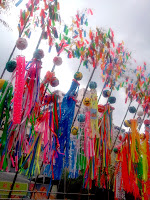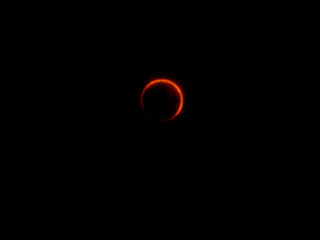 [EN] Festival on 08 July 2012 ・ [FR] Festival le 08 juillet 2012 ・ PHOTOS ・ SUGGESTIONS
[EN] Festival on 08 July 2012 ・ [FR] Festival le 08 juillet 2012 ・ PHOTOS ・ SUGGESTIONS[EN] 08 July 2012: 七夕祭 (Tanabata festival) in 平塚 (Hiratsuka, Japan)
I discovered 平塚 (Hiratsuka, Japan) on 08 July 2012, third/last day of its 62nd 七夕祭 (Tanabata festival) honouring two heavenly lovers, then relaxed at a nearby beach.
Joyful Japanese people crowded streets vividly decorated from the station to a distant plaza, buying food, drinks, toys and souvenirs to friendly shopkeepers. Some children, young ladies and even dogs wore 浴衣 (yukata, summer kimono)! At the plaza, skilled groups including children with funky hairstyles performed modern dances, cheerleading or traditional dances under giant flags. In a peripheral alley, a professional DJ in kimono gave a cyberpunk touch to the event :)
This great cut from my heavy workdays motivates me to return or attend 仙台 (Sendai)'s even more famous celebration in 2013.
⟹ LEARN MORE (20 PHOTOS, 2 SUGGESTIONS)...
[FR] 08 juillet 2012: 七夕祭 (festival Tanabata) à 平塚 (Hiratsuka, Japon)
J'ai découvert 平塚 (Hiratsuka, Japon) le 08 juillet 2012, troisième/dernier jour de son 62ème 七夕祭 (festival Tanabata) honorant deux amoureux célestes, puis me suis détendu à une plage proche.
Des japonais heureux emplissaient les rues décorées de couleurs vives de la gare à une place distante, achetant nourriture, boissons, jouets et souvenirs à d'amicaux commerçants. Des enfants, de jeunes femmes et même des chiens portaient des 浴衣 (yukata, kimono d'été) ! A la place, des groupes doués incluant des enfants aux coiffures funky exécutèrent des danses modernes, spectacles de pom-pom girls ou danses traditionnelles sous des drapeaux géants. Dans une allée périphérique, une DJ professionnelle en kimono apportait sa touche cyberpunk :)
Cette remarquable coupure d'un quotidien lourd en travail me motive à revenir ou à assister au festival encore plus réputé de 仙台 (Sendai) en 2013.
⟹ EN SAVOIR PLUS (20 PHOTOS, 2 SUGGESTIONS)...





